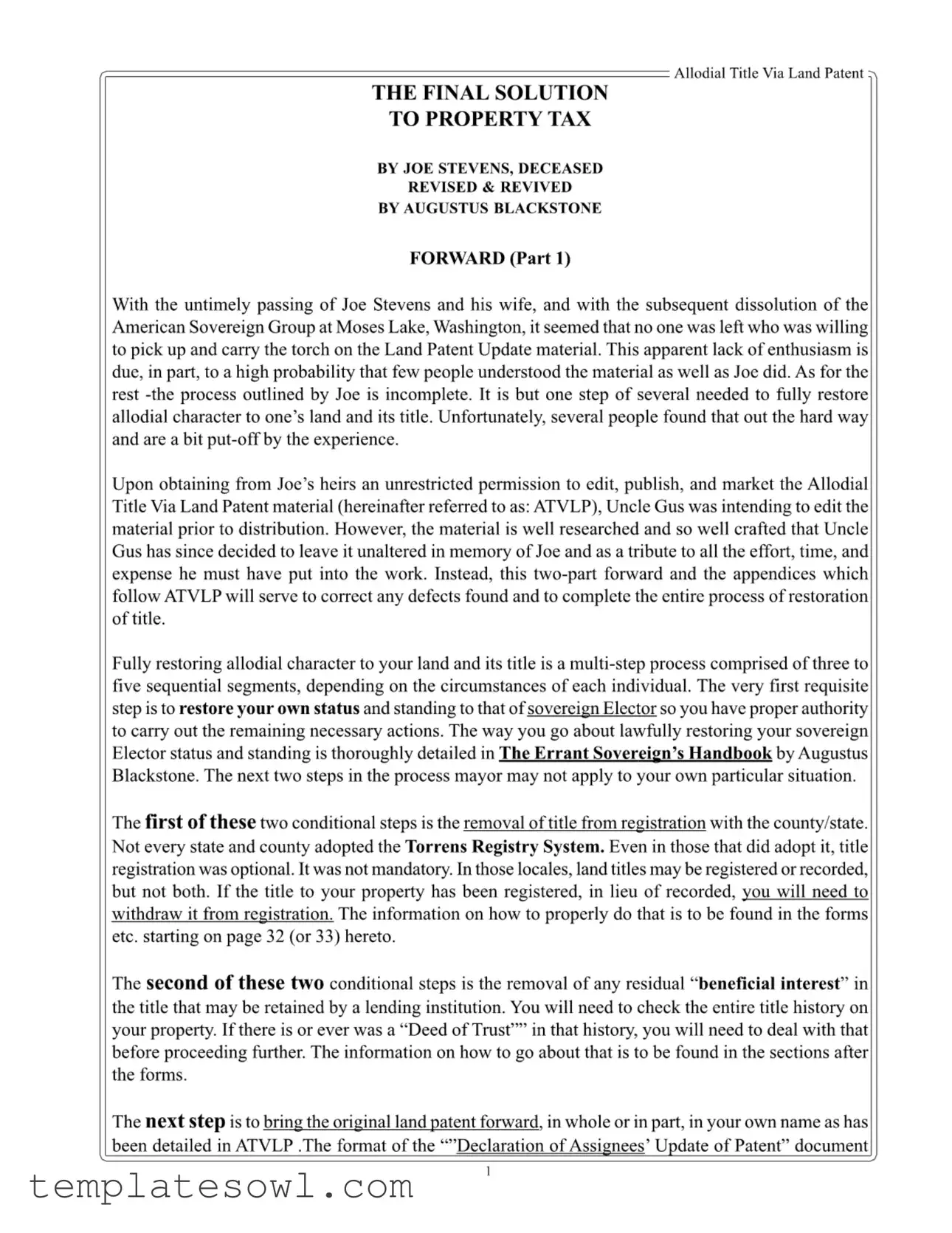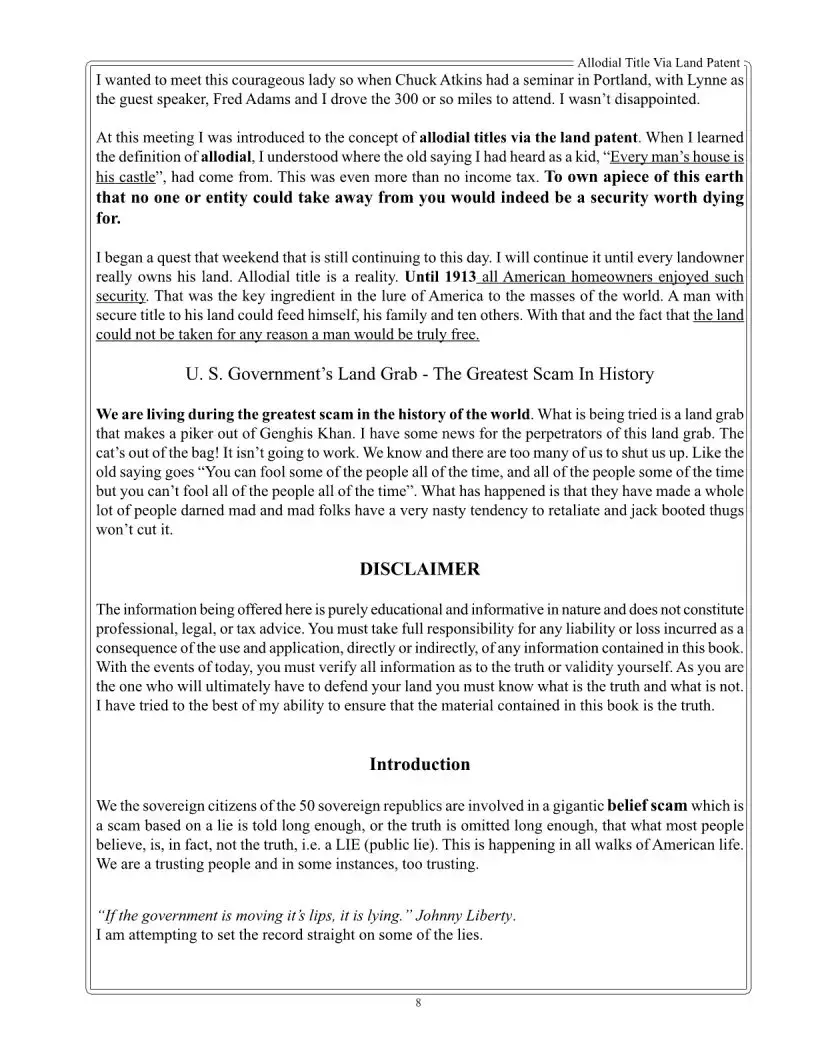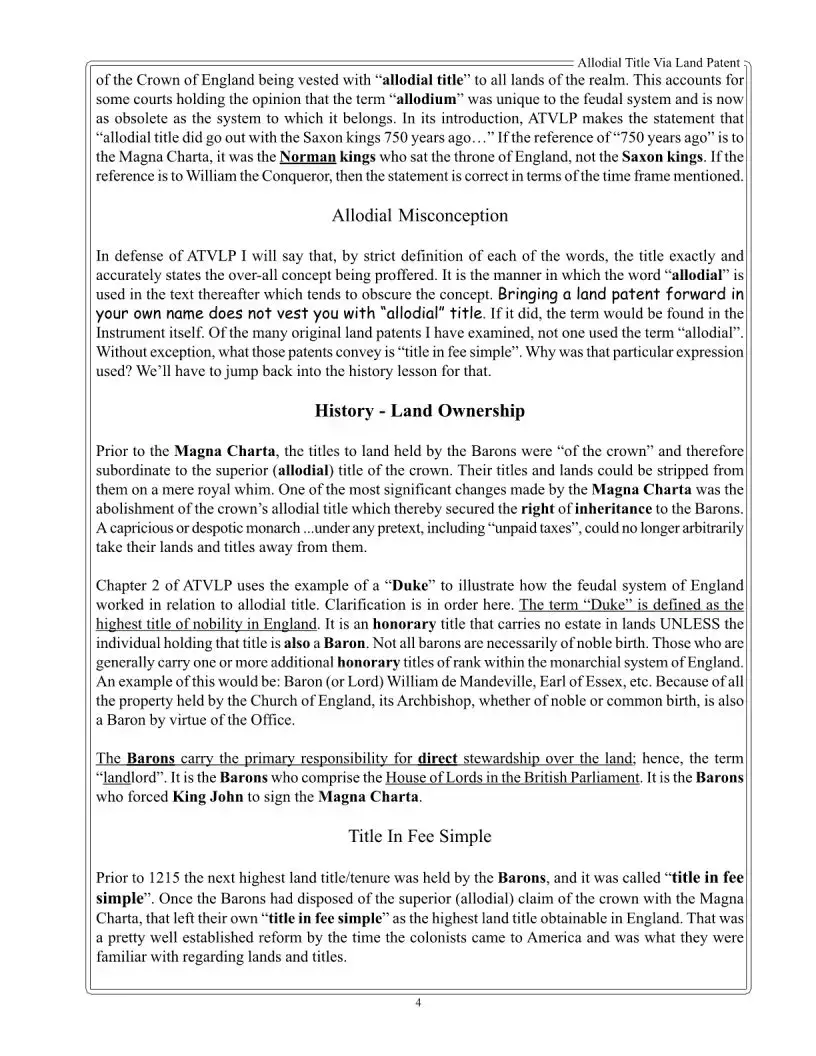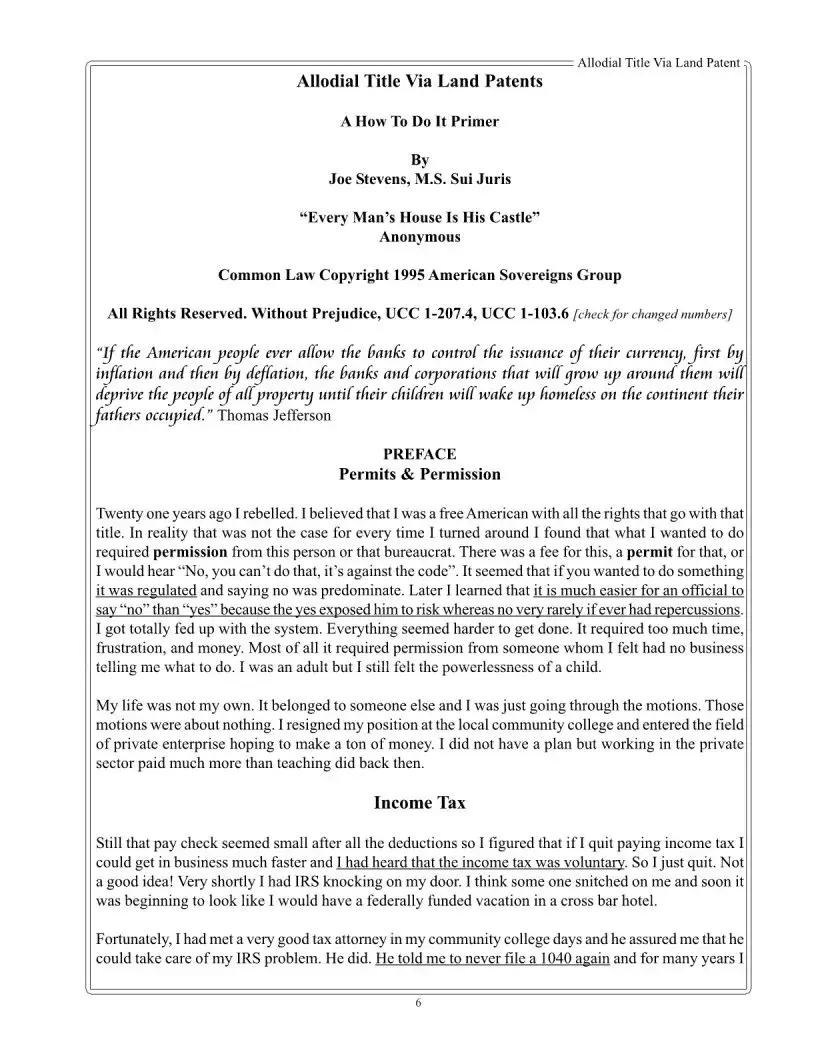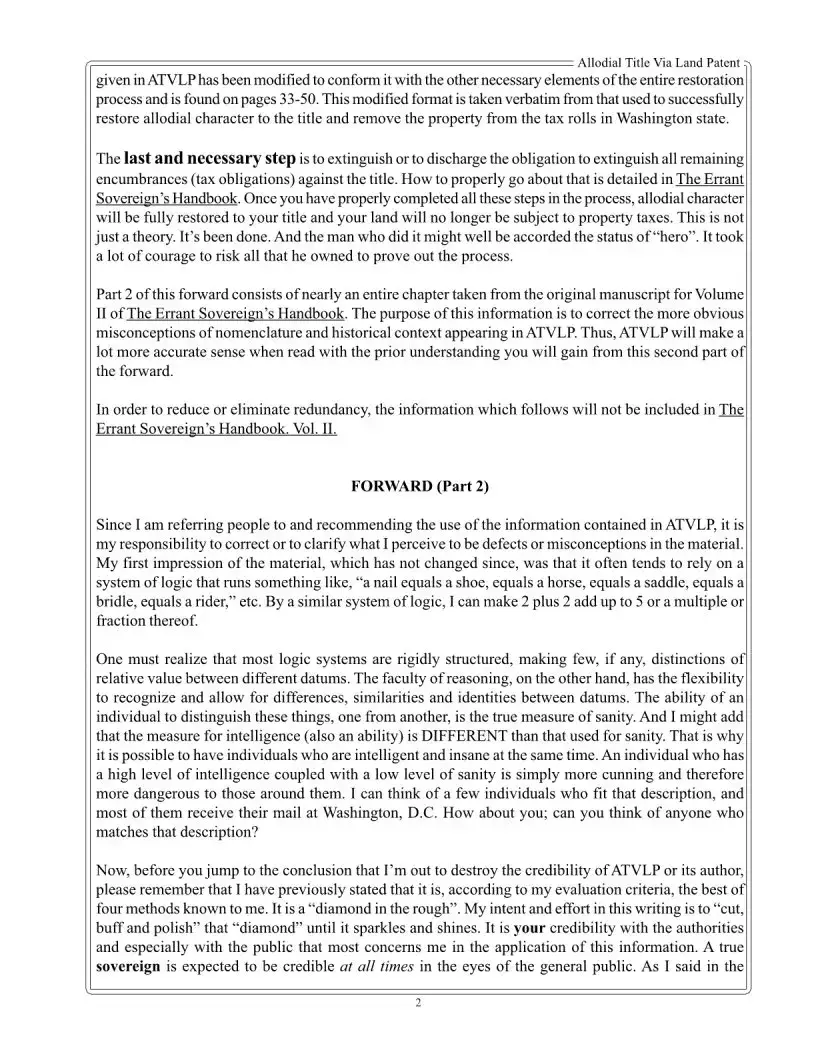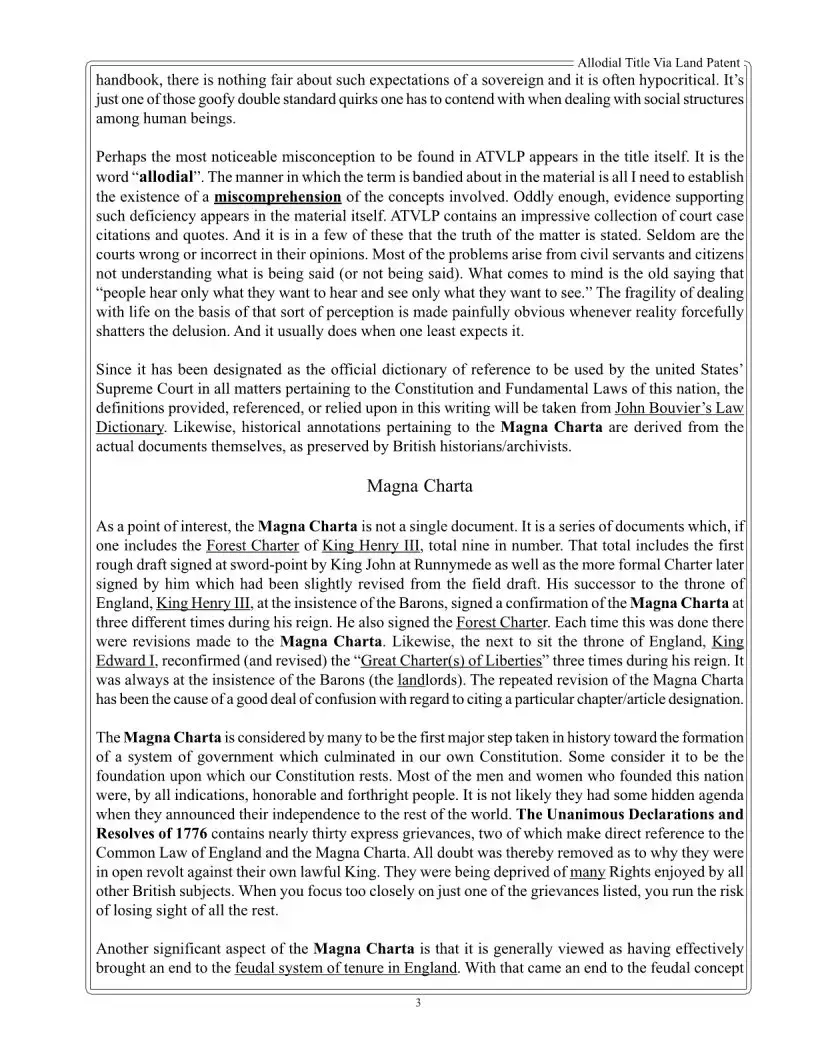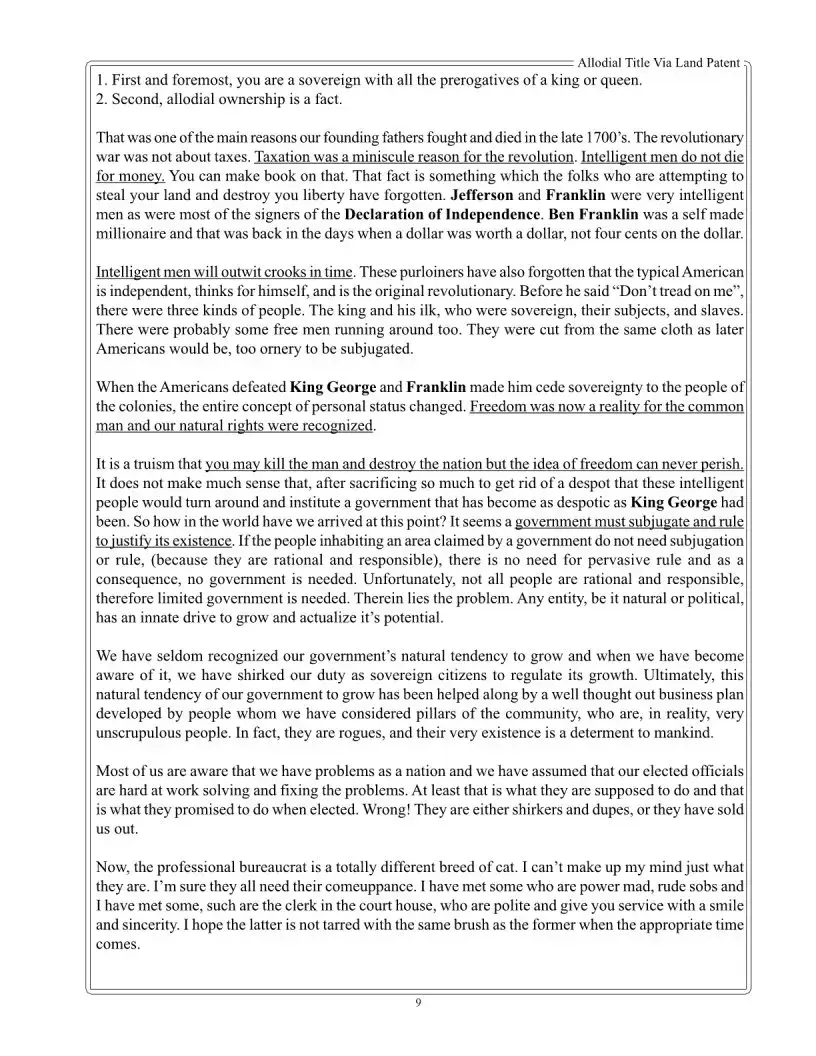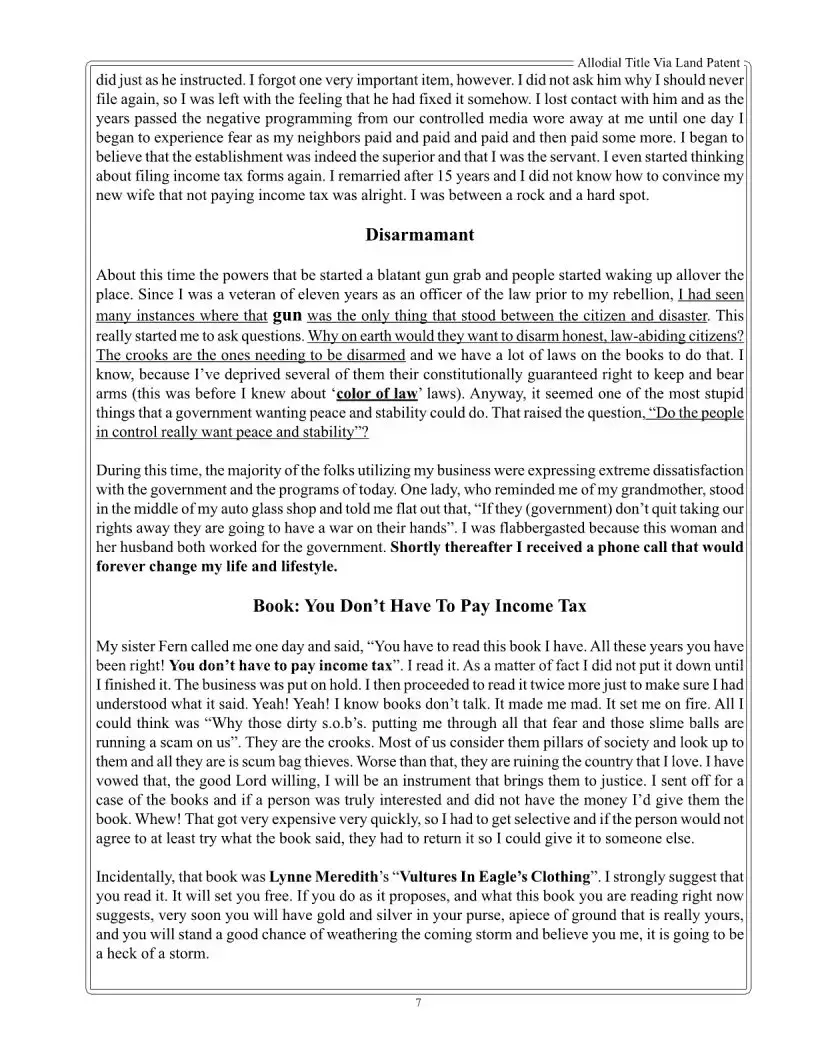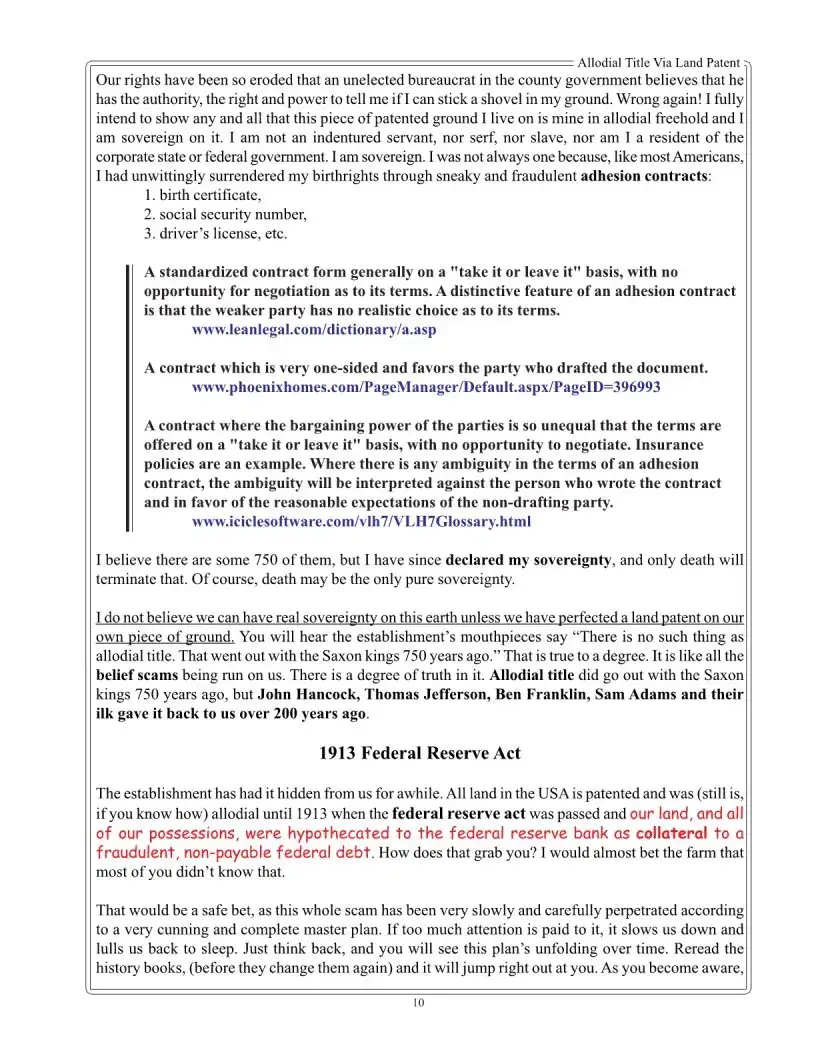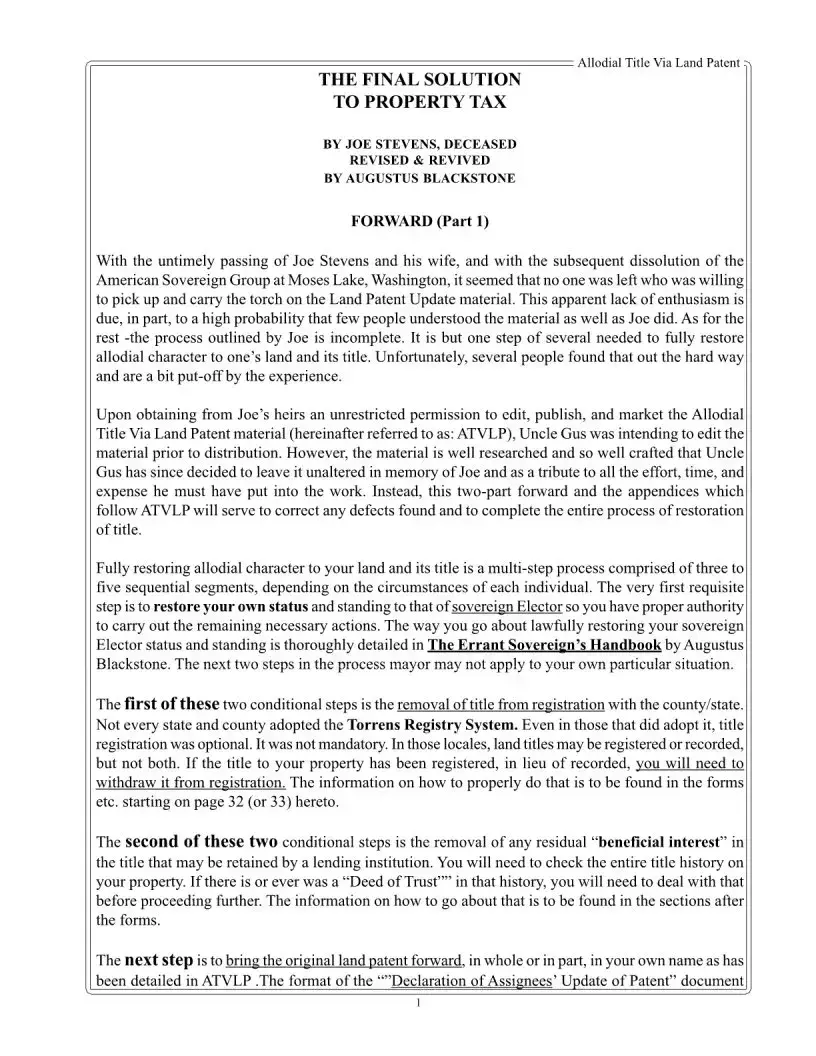Filling out the Allodial Title form can be a complex process, and many individuals make mistakes that can lead to frustration or even delays. Here are nine common mistakes people often make when completing the form.
First, many applicants fail to understand the importance of establishing their own status as a sovereign Elector. This is a critical initial step in the process. Without proper authority, further actions may be ineffective or invalid. A lack of research on how to restore this status can derail the entire effort.
Second, some individuals overlook the need to check whether their land title is registered or recorded. In certain states, especially those that adopted the Torrens Registry System, title registration might not be necessary. Confusion between the two can result in submitting incorrect forms, requiring additional time and effort to correct.
Third, many applicants neglect to investigate the history of their property title thoroughly. If a "Deed of Trust" once existed, failure to address this issue before proceeding can complicate the subsequent steps. Ignoring this crucial detail can lead to legal entanglements down the line.
Fourth, people often misinterpret the necessary format for important documents such as the “Declaration of Assignees’ Update of Patent.” Following the outdated or incorrect format could lead to rejection of the application, potentially incurring extra costs or complications.
Fifth, miscommunication can arise concerning the tax obligations associated with the title. Individuals may misunderstand how to discharge these obligations. Properly extinguishing tax-related encumbrances is vital; failure to do so can keep land subject to property taxes.
Sixth, some applicants submit incomplete forms without paying attention to required information. Omissions can lead to delays as additional requests for information might be made. Careful reading of the instructions is essential to ensure all sections are filled out correctly.
Seventh, individuals sometimes rush through the process without fully comprehending the historical context and legal definitions involved. Misunderstanding terms like “allodial” can create significant gaps in knowledge that affect the application. A more thorough understanding can lead to better decision-making.
Eighth, many people do not consult reliable resources to clarify their understanding of the process. Relying solely on personal interpretation without outside verification can lead to mistakes. Engaging with the recommended handbook or legal experts may provide vital insights.
Lastly, applicants often underestimate the importance of patience in this process. Rushing to complete forms can lead to errors that require correction later. Taking the time to carefully complete paperwork leads to better outcomes and can save time in the long run.
